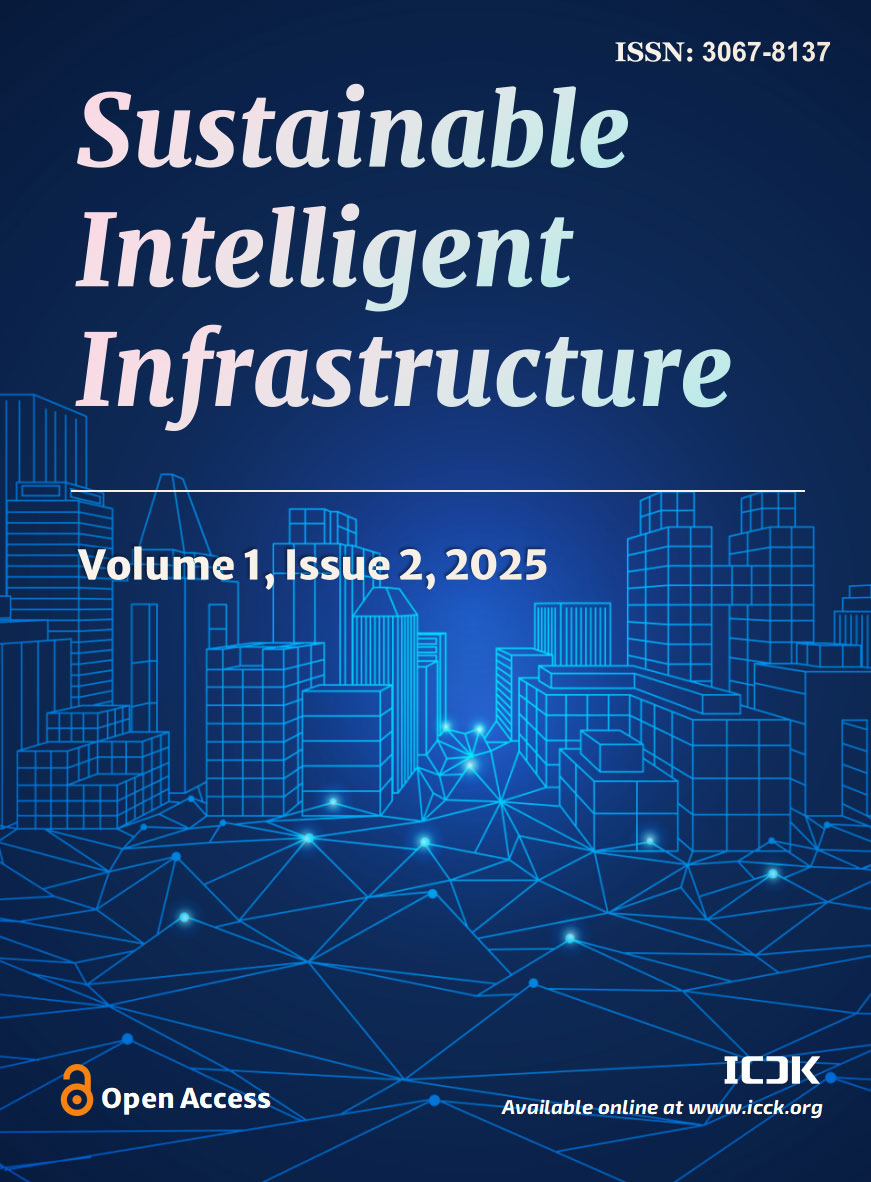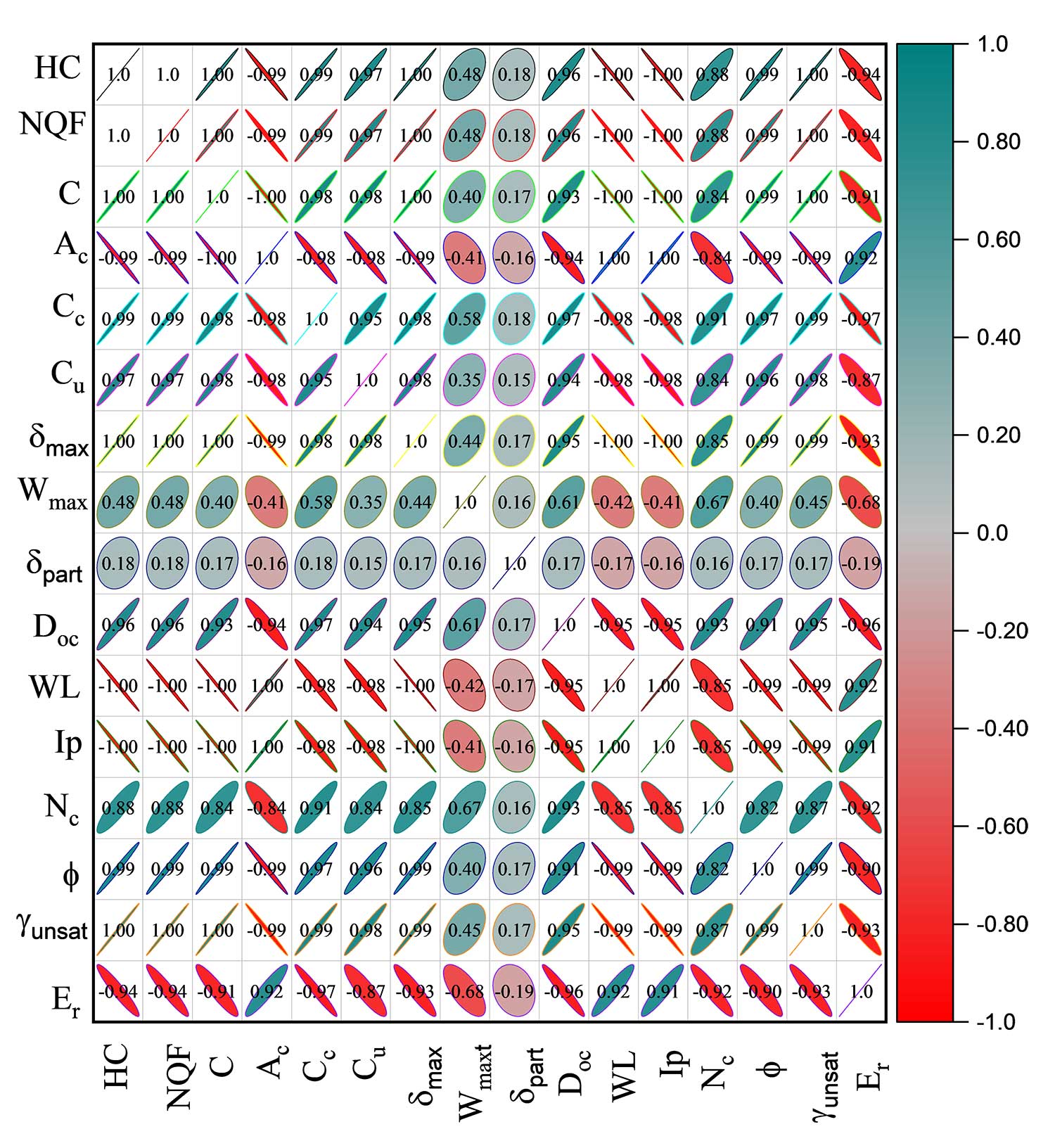Abstract
This research pioneers the application of a diverse set of advanced machine learning and optimization methods, to predict the erodibility of lateritic soil treated with cement and nanostructured quarry fines, providing a groundbreaking, data-driven approach that enhances traditional erosion analysis techniques. Traditional experimental methods for erosion analysis are often complex and resource-intensive; therefore, this research focuses on developing predictive models using Python. To build the machine learning and optimization models, 121 data points were collected from existing literature. The dataset includes erodibility measurements of unsaturated lateritic soil treated with local cement and enhanced with nanostructured quarry fines. The study employs Artificial Neural Networks (ANN), Random Forest (RF), Support Vector Machine (SVM), XGBoost, CatBoost, and Particle Swarm Optimization (PSO) to predict soil erodibility. The data was divided into training (70%), testing (15%), and validation (15%) sets for model development and evaluation. Model performance was assessed using statistical metrics such as $R^2$, M.A.E., M.S.E., R.M.S.E., and M.A.P.E. The results indicated an $R^2$ value are almost equal to 1 in training, testing, and validation phases, and the M.A.P.E. values are below 3% for the CatBoost, RF, XGB, SVM, and ANN models across all three phases: training, testing, and validation. The CatBoost, RF, XGB, SVM, and ANN models are most accurate in predicting the erodibility. Finally, relative importance showed that maximum unit weight and hydrated cement are the most influencing parameter in predicting the erodibility.
Keywords
unsaturated lateritic soil
ANN
RF
SVR
XGBoost
CatBoost
PSO
relative importance
Data Availability Statement
Data will be made available on request.
Funding
This work was supported without any funding.
Conflicts of Interest
The authors declare no conflicts of interest.
Ethical Approval and Consent to Participate
Not applicable.
Cite This Article
APA Style
Gnananandarao, T., Muktinutalapati, J., Maralapalle, V., Ram Kumar, B. A. V., & Ajay, C. H. (2025). Advanced Machine Learning and Optimization for Erodibility Prediction of Treated Unsaturated Lateritic Soil. Sustainable Intelligent Infrastructure, 1(2), 93–107. https://doi.org/10.62762/SII.2025.839324
Publisher's Note
ICCK stays neutral with regard to jurisdictional claims in published maps and institutional affiliations.
Rights and Permissions

Copyright © 2025 by the Author(s). Published by Institute of Central Computation and Knowledge. This article is an open access article distributed under the terms and conditions of the Creative Commons Attribution (CC BY) license (
https://creativecommons.org/licenses/by/4.0/), which permits use, sharing, adaptation, distribution and reproduction in any medium or format, as long as you give appropriate credit to the original author(s) and the source, provide a link to the Creative Commons licence, and indicate if changes were made.


 Submit Manuscript
Edit a Special Issue
Submit Manuscript
Edit a Special Issue

 Copyright © 2025 by the Author(s). Published by Institute of Central Computation and Knowledge. This article is an open access article distributed under the terms and conditions of the Creative Commons Attribution (CC BY) license (https://creativecommons.org/licenses/by/4.0/), which permits use, sharing, adaptation, distribution and reproduction in any medium or format, as long as you give appropriate credit to the original author(s) and the source, provide a link to the Creative Commons licence, and indicate if changes were made.
Copyright © 2025 by the Author(s). Published by Institute of Central Computation and Knowledge. This article is an open access article distributed under the terms and conditions of the Creative Commons Attribution (CC BY) license (https://creativecommons.org/licenses/by/4.0/), which permits use, sharing, adaptation, distribution and reproduction in any medium or format, as long as you give appropriate credit to the original author(s) and the source, provide a link to the Creative Commons licence, and indicate if changes were made. 